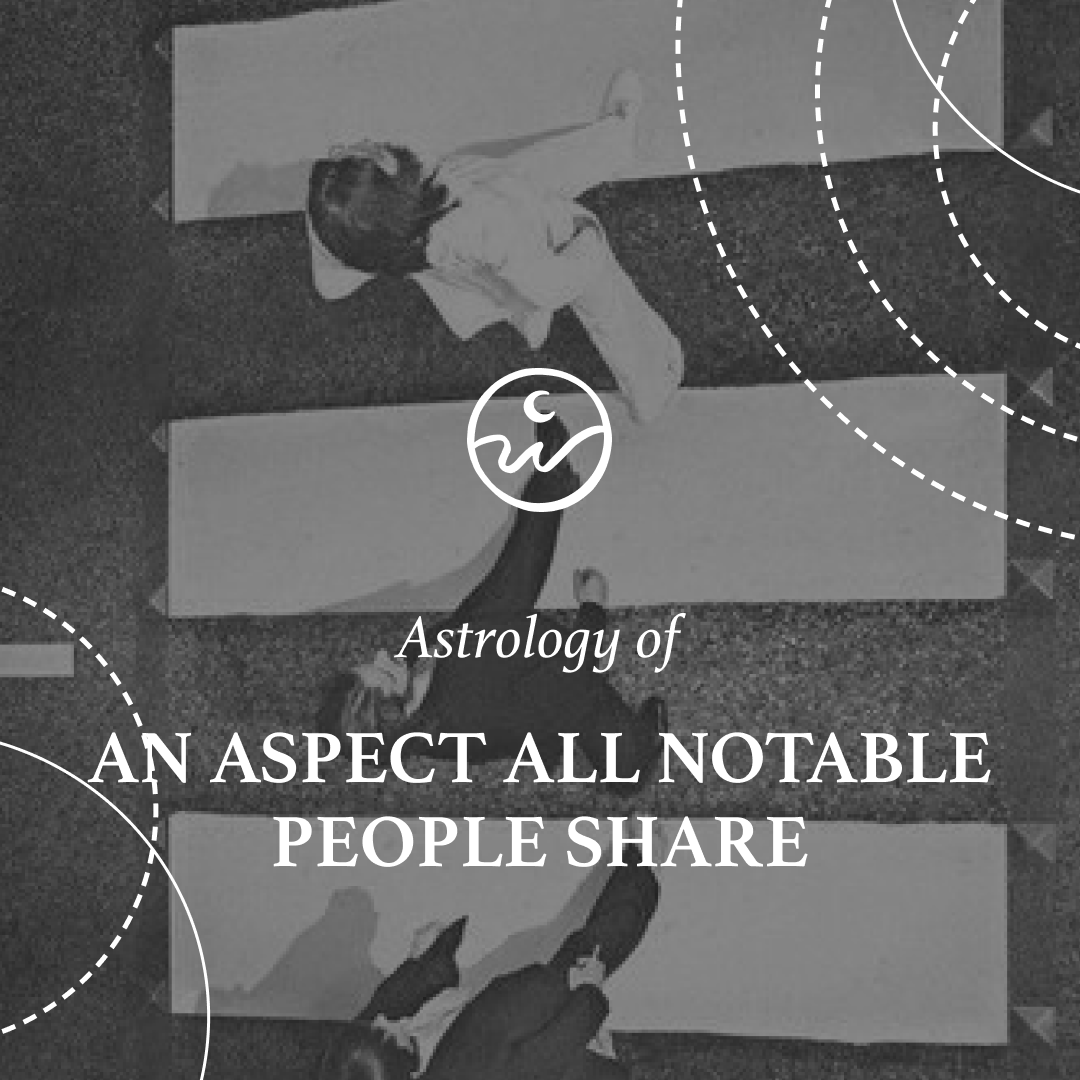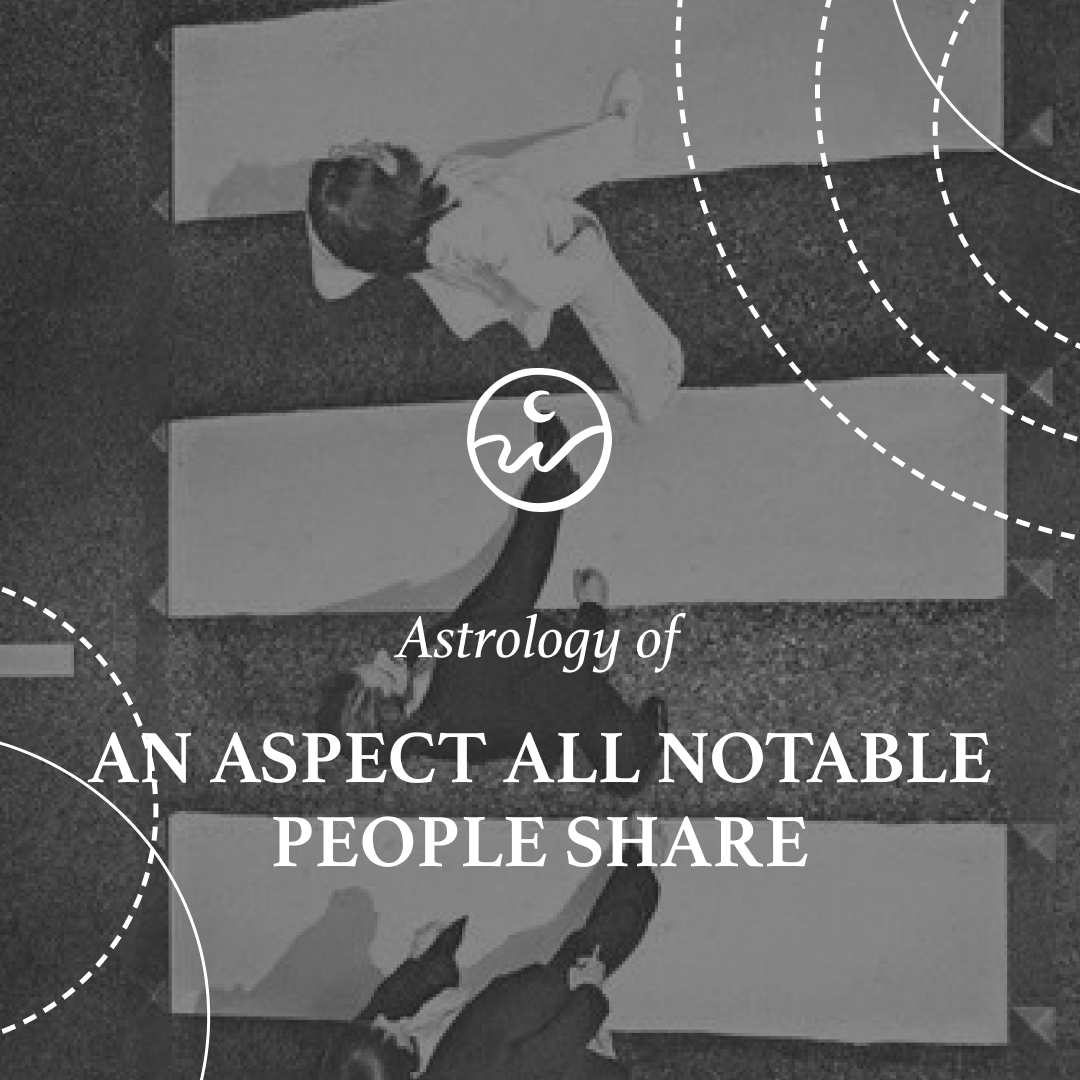Have you ever wondered if there’s something in the stars that makes someone important and famous?
Ever since I started studying astrology and opening natal charts of celebrities and notable people from the past, one thing stood out to me. I would always see one transpersonal planet on one of their cardinal points more often than could reasonably be called a coincidence. For the last 10 years, I was haunted by this need to truly quantify the charts of notable people and see if my first impression was correct.
And it turns out—it is correct.
After collecting and reviewing 350 charts of deceased, globally recognized figures and narrowing it down to the 109 most accurate charts (AA-rated birth times), I discovered that a staggering 84.4% of these people had Uranus, Neptune, or Pluto within 15° of a cardinal point in their chart (Ascendant, Midheaven, IC, or Descendant). Statistically, the expected rate—based on sky geometry—is just 70.37%.
That’s a jump of over 14%. The deviation is not just noticeable—it’s statistically significant, with a p-value of 0.00053. That means there's roughly a 1 in 1,900 chance that this clustering happened by accident.
What Does This Mean?
The outer planets—Uranus, Neptune, Pluto—are often overlooked in favor of faster-moving personal planets. But symbolically, they deal with collective myth, transformation, vision, and disruption. And when they sit on the most visible points in a natal chart, something powerful tends to unfold.
In simple terms: these planets act like spotlights or megaphones when placed on cardinal angles. Here’s a breakdown of what these placements tend to symbolize:
- Uranus on an angle brings originality, shock, innovation, rebellion. Think of people who changed the rules or made their names by doing something radically different.
- Neptune on an angle casts a dreamlike glow—associated with fame, artistic magnetism, spirituality, and the blurring of self with symbol.
- Pluto on an angle marks intensity, power, control, and transformation—those who carry cultural weight or provoke deep shifts.
Astrologers have known this for a long time, but now we have data to prove the symbolic meaning of these planets indeed translates to real life.
The Cardinal Points
Why does angularity matter?
Because in astrology, the Ascendant, Midheaven, IC, and Descendant are where the personal meets the world. These are the most vibrant and influential points in the chart.
- ASC (Ascendant): How you show up in the world
- MC (Midheaven): Your public image, career, and legacy
- IC (Imum Coeli): Your roots and inner world
- DC (Descendant): Your partnerships and how you’re reflected back by others
These four points are sensitive, loud, and outward-facing. When Uranus, Neptune, or Pluto lands here, that person is—intentionally or not—wired for collective impact.
Imagine a house with four windows, one on each side. Whatever you display in those windows—flowers, clay pots, paintings... those objects will define you, they will attract attention, and the world will ask you about them. This is how planets work when they touch these cardinal points. And when transpersonal planets land on cardinal points, the effect is amplified—generational, spiritual.
Who Showed the Pattern?
It isn't easy to find AA charts, which is why this initial stage of research has only 109 charts, but we are working on expanding that.
Here’s what I found when I broke it down by category (AA-rated charts only):
Stronger-than-expected angularity:
- Musicians (28): 92.9% had at least one outer planet on a cardinal point. This was the most striking category. Think Billie Holiday, Elvis, Bowie, Mozart, Nina Simone. It makes sense this category is most striking if you take into consideration music in general has a bigger cultural impact than other artistic disciplines.
- Writers (23): 82.6% had the aspect. Neptune and Pluto especially dominate, fitting the mythic and psychological depth these individuals carry.
- Filmmakers (5): 100% of the AA-rated filmmakers showed the aspect. Every single one.
- Athletes (7): 85.7%—stronger than I expected. Uranus and Pluto were especially common on the MC and ASC.
- Painters (13): 84.6%, led largely by Neptune on the ASC and MC.
- Philosophers (10): 80%, often with Neptune or Pluto on the IC or MC.
Matched or slightly below expectation:
- Politicians (9): 77.8%. Still high, but closer to the expected probability. Pluto was frequent, as you'd guess.
- Scientists (8): 75%. A decent match, though not exceeding significantly.
- Military figures (7): 71.4%—hovering right around the expected 70.37%.
- Religion (1): Only one AA-rated chart available (Pope Francis), so data is inconclusive.
- Explorers (0): No AA-rated charts available—most birth times are simply lost to history.
I think this proves that transpersonal planets on cardinal points aren't about how much you influence the world directly, but how much space you take up in the collective unconscious—in the minds of people, the culture. Military and political decisions undoubtedly change the world more than art or philosophy—millions may literally die because of them. But the names of those who create art, music, or write books tend to live more vividly in our textbooks, conversations, and media we consume. And it looks like that is what transpersonal planets are all about - influencing the collective unconscious.
Statistics: What I Actually Did
To test this idea properly, I analyzed 350 birth charts of deceased, globally recognized individuals. I chose people who are not with us anymore because its hard to recognize who from the current celebrities will stick around in the collective unconscious and who won't.
To control for accuracy, I used only charts with AA Rodden ratings (verified birth times) for statistical testing—109 in total.
- I defined a conjunction as within 15° of any angle: ASC, MC, IC, or DC
- Each planet had a 33.33% chance of being within orb of a cardinal point
- The probability of none of them being angular in any chart is: (1 - 0.3333)³ ≈ 29.63%
- Therefore, the expected probability of at least one angular outer planet is 70.37%
But I found 92 out of 109 AA-rated charts had the aspect.
That’s 84.4%, exceeding expectation by more than 14 percentage points.
And when I ran a binomial test on that difference?
p = 0.00053, or in other words there's roughly a 1 in 1,900 chance this pattern emerged by accident.
Why This Matters?
Astrology was a highly respected science 1,000, 2,000, and even 3,000 years ago. But with the rise of modern science, it fell out of favor. However, as science progresses and we gain access to huge datasets (like the one on astro.com), maybe it's time for a comeback of astrology into the mainstream. Research like this is a small step forward.
So if you’re reading this and you were born with Pluto on your MC, or Neptune rising, or Uranus on your IC... pay attention. You might not be famous (yet), but something in you was built to carry collective energy.
And if you don't have any of the aspects included in this research, but you're still harboring big dreams—don’t worry. You can still achieve them. The correlation is strong, but it's not absolute.
Comment your birth data below, and I can tell you if you have any transpersonal planets shaping your fame.
Stay tuned for the continuation of this research.


